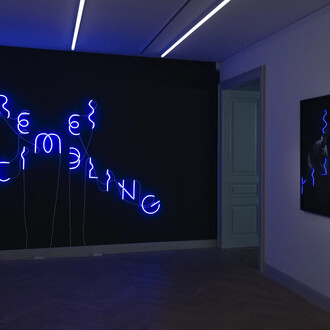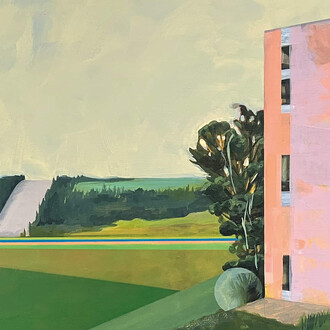The exhibition suggests an idea of photography as a training of the gaze. It features artists who are experiencing epochal changes in the way of perceiving space and time, images and their multiplication and spread. It outlines a discourse on the potential of photography as a tool of knowledge that restores to the gaze something it is perhaps losing, due to accumulation or cultural blindness: the ability to see and to sense the mutual relations among images.
The desire to return to the basic elements of photography – light and time – to reactivate obsolete techniques and procedures, to get back in touch with the miracle of analog photography and the darkroom, or to insist on always using the same camera, is intertwined with an attitude of reinterpretation of artifacts that belong to the dawn of photography, or research and gathering of images that already exist – by others, anonymous or humble images – found where no one was looking any longer. Images, these last ones, observed and re-observed, cut and rephotographed, magnified, enlarged, grouped, overlapped, reorganized, enabling them to still reveal their semantic potential. In the photographs we can recognize that mixture of art and science, creative inspiration and technological invention of the pioneers, or a technological sophistication that moved forward with the discoveries of those inventors. Works that involve the viewer in an act of complicity, force him into a situation of intimacy.
“Never leave photos lying around” - as the title of the show quotes from the film Ascenseur pour l'échafaud (Elevator to the Gallows) by Louis Malle - because you never know what an artist might do with them.
Alongside Linda Fregni Nagler (Stockholm, 1976, lives in Milan), who this time has selected images of smoke from her collection of 3600 magic lantern slides, which she prints with analog procedures on direct positive paper and recolors by hand, translating the material quality and chromatic substance of the original artifacts, there is a photographer who works with and always carries a 35mm camera, Jochen Lempert (Moers, 1958, lives in Hamburg), with his natural aptitude for recognizing and combining corresponding forms. The German artist puts us in touch with concrete realities that would escape our attention were it not for his polite insistence. He makes us see things that have passed us by while we were distracted, amplifying vision through an original choreographic arrangement of the images in the exhibition space. The same intensity of relation with the image is always a feature of the collages of John Stezaker (Worcester, 1949, lives in London) and of the works of Alessandra Spranzi (Milan, 1962, lives in Milan), where the combinatory quality of the visual palimpsest or surprising operations of semantic slippage are able to induce a sort of enchantment in the face of an unexpected phenomenon that always regenerates itself.
Others, like Johan Österholm (Borås, 1983, lives in Malmö) are seduced by images that come from the sky. He makes off-camera photographs, direct imprints, of one half of an apple or of the moon, playing with the quantity of light in relation to the sensitivity of the emulsion.
A return to experimentation that in the practice of Leticia Ramos (Santo Antônio da Patrulha,1976, lives in São Paulo) feeds on the fascination with images obtained by etching them on a photosensitive surface. The Brazilian artist presents a new series of photograms that reconstruct the image of a sculpture on photographic paper – seeming like a tribute, starting with the title, to the repertoire of organic concretism of her culture – in which light brings out the variety of surfaces, full and empty zones, in an infinite game of visual possibilities.
This multiplied vision is achieved in a completely different way by Barbara Probst (Munich, 1964, lives in New York), who stages a situation calculated to disrupt the monocular perspective system of Renaissance origin, incorporated in photography, obtaining a simultaneous double image of an ice skater in Central Park.












